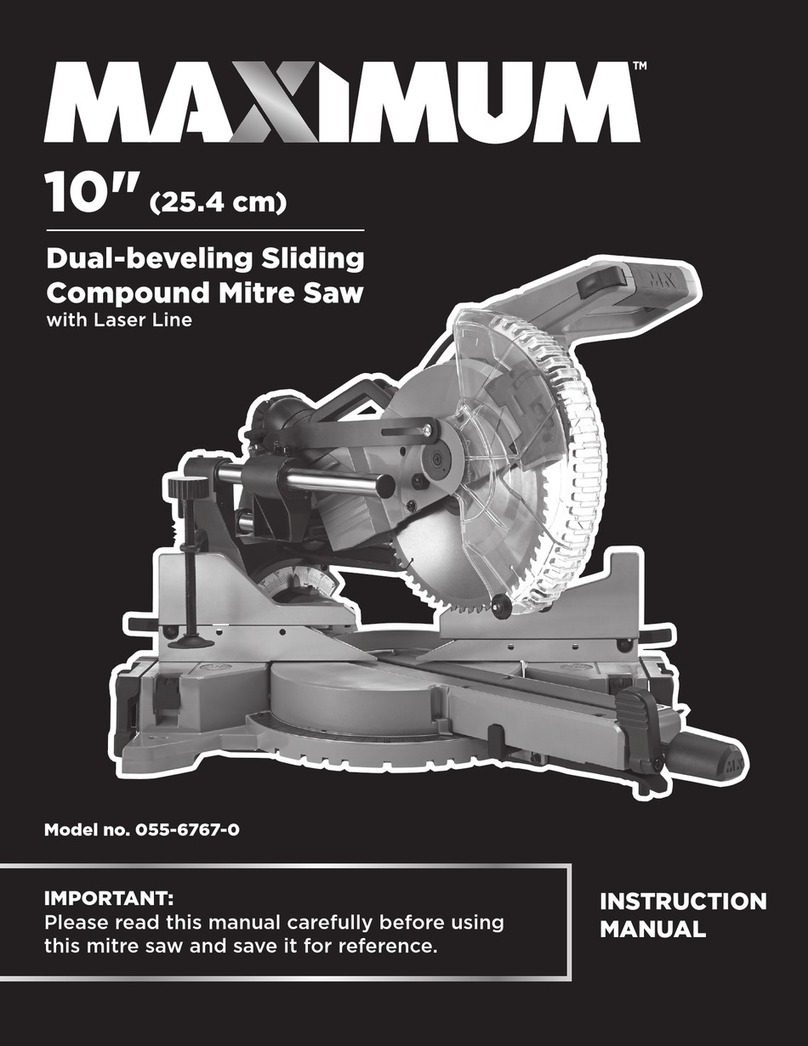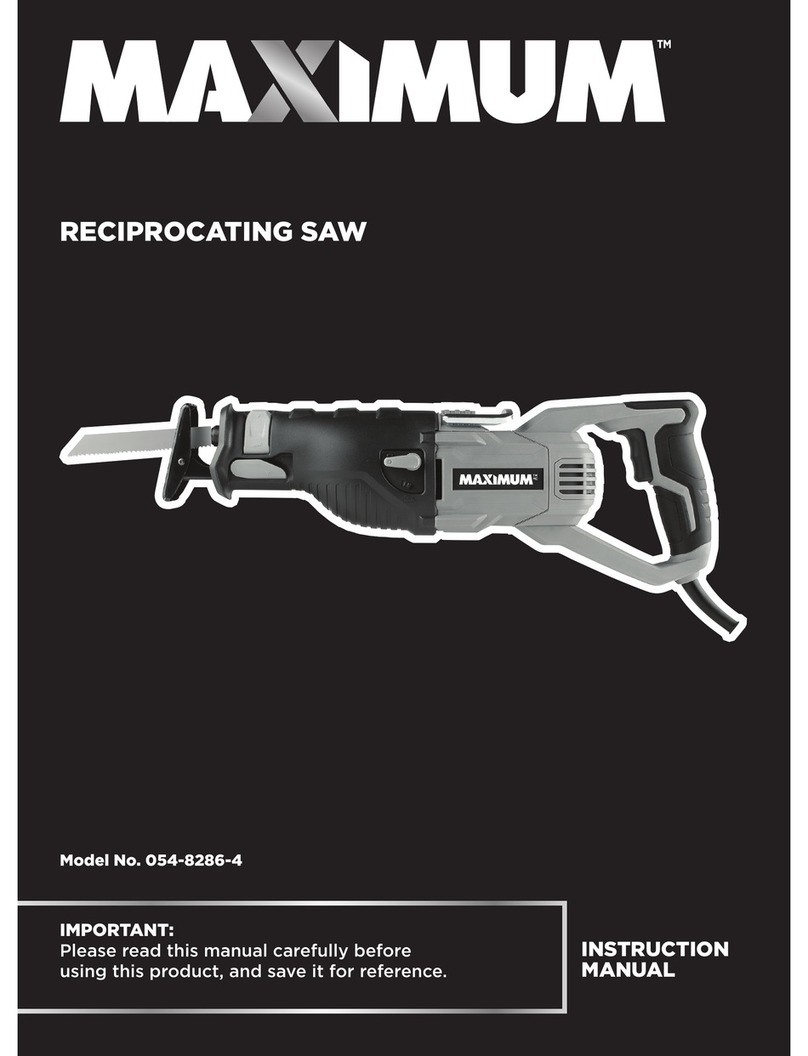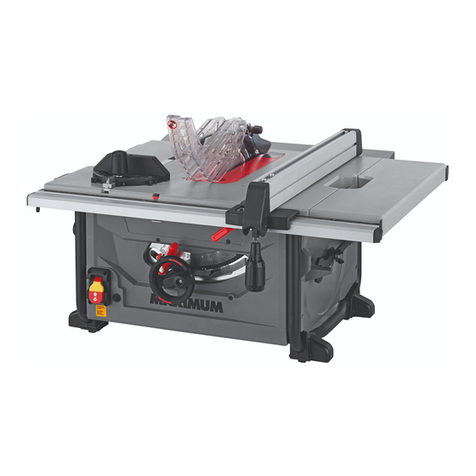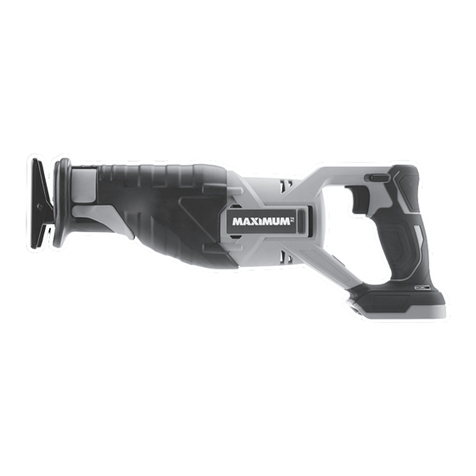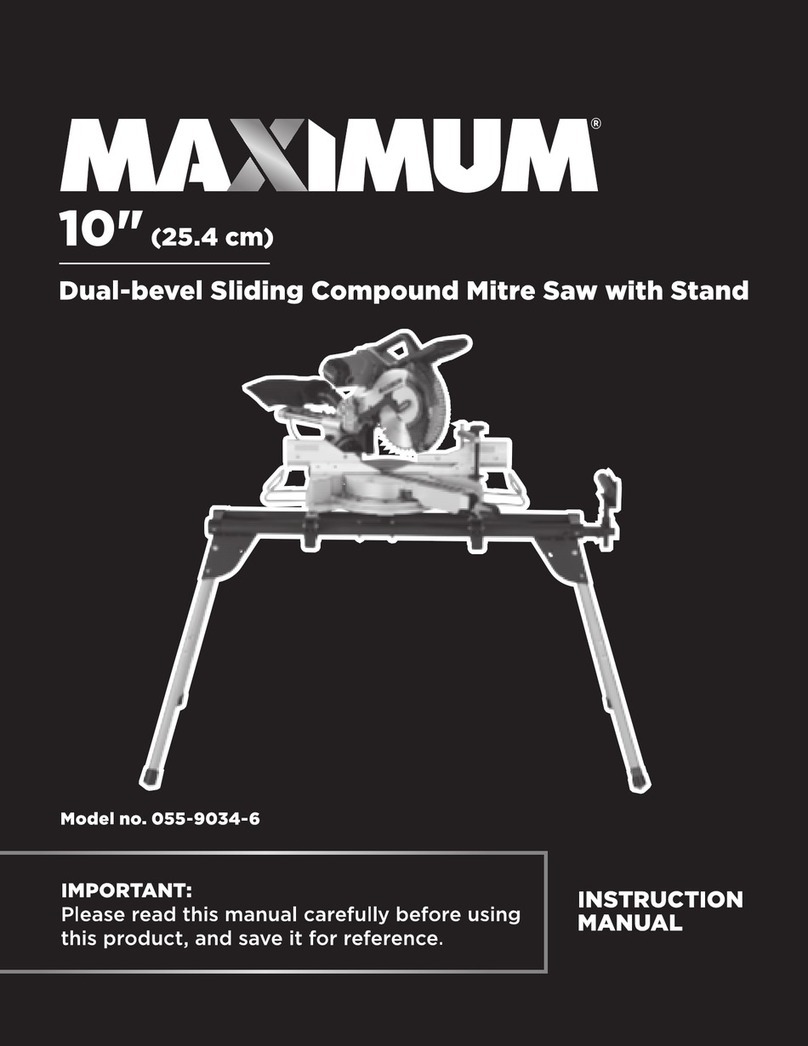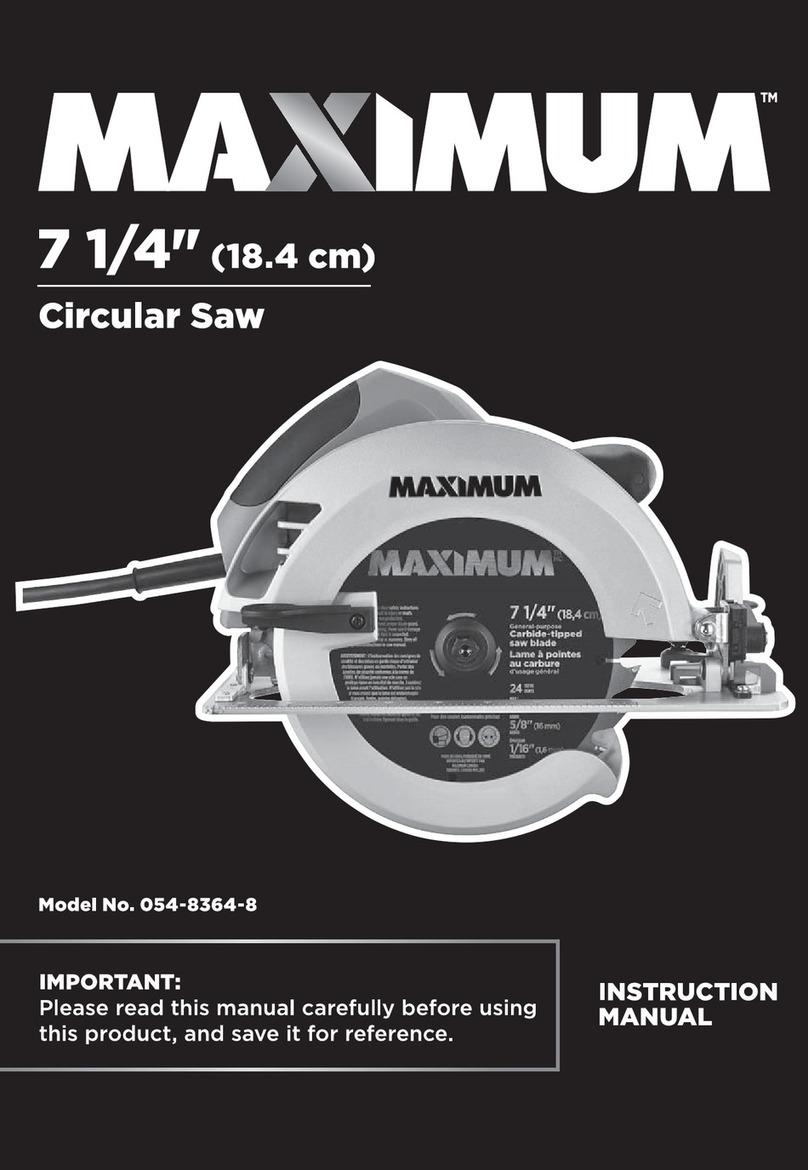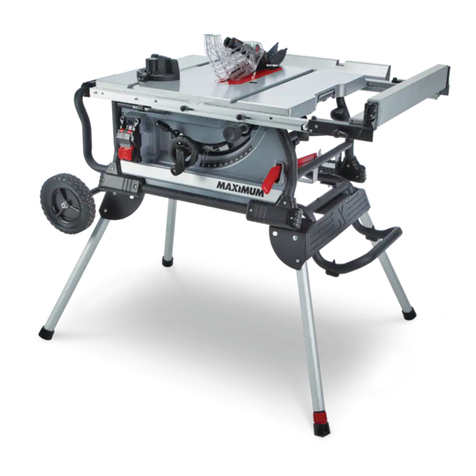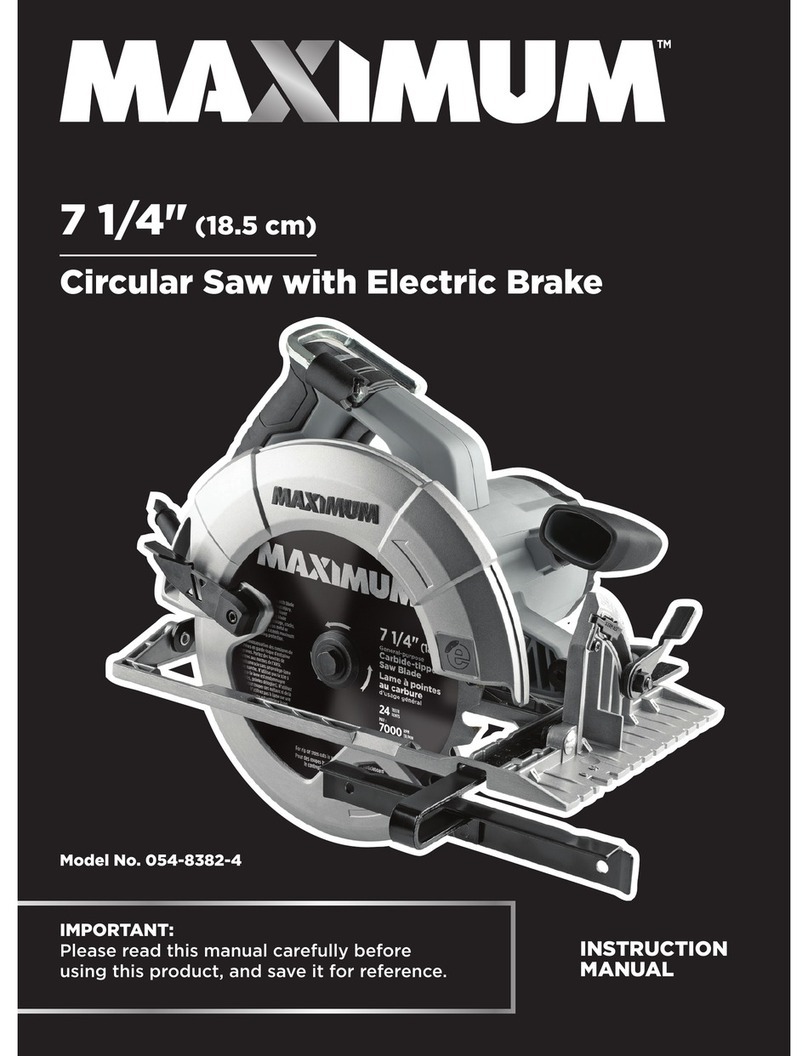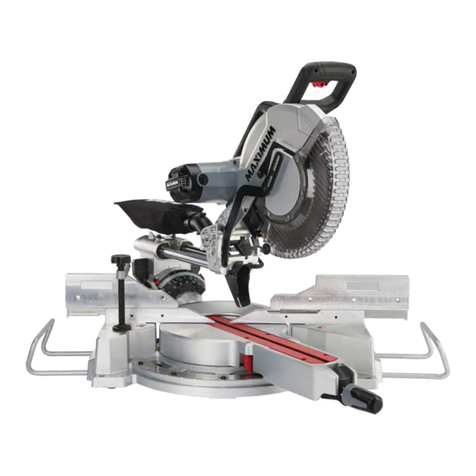
9
SAFETY GUIDELINES
8
SAFETY GUIDELINES
b) Use only bonded reinforced or diamond cut-off wheels for your power tool. Just
because an accessory can be attached to your power tool, it does not assure safe
operation.
NOTE: The wording “bonded reinforced” or “diamond” is used as applicable depending
on the designation of the tool.
c) The rated speed of the accessory must be at least equal to the maximum speed
marked on the power tool. Accessories running faster than their rated speed can break
and fly apart.
d) Wheels must be used only for recommended applications. For example: do not grind
with the side of a cut-off wheel. Abrasive cut-off wheels are intended for peripheral
grinding, side forces applied to these wheels may cause them to shatter.
e) Always use undamaged wheel flanges that are of correct diameter for your selected
wheel. Proper wheel flanges support the wheel thus reducing the possibility of wheel
breakage.
f) The outside diameter and the thickness of your accessory must be within the
capacity rating of your power tool. Incorrectly sized accessories cannot be
adequately guarded or controlled.
g) The arbour size of wheels and flanges must properly fit the spindle of the power tool.
Wheels and flanges with arbour holes that do not match the mounting hardware of
the power tool will run out of balance, vibrate excessively and may cause loss of
control.
h) Do not use damaged wheels. Before each use, inspect the wheels for chips and cracks.
If the power tool or wheel is dropped, inspect for damage or install an undamaged
wheel. After inspecting and installing the wheel, position yourself and bystanders
away from the plane of the rotating wheel and run the power tool at maximum no
load speed for one minute. Damaged wheels will normally break apart during this test
time.
i) Wear personal protective equipment. Depending on application, use face shield,
safety goggles or safety glasses. As appropriate, wear dust mask, hearing protectors,
gloves and shop apron capable of stopping small abrasive or workpiece fragments.
The eye protection must be capable of stopping flying debris generated by various
operations. The dust mask or respirator must be capable of filtrating particles
generated by your operation. Prolonged exposure to high intensity noise may cause
hearing loss.
j) Keep bystanders a safe distance away from work area. Anyone entering the work
area must wear personal protective equipment. Fragments of workpiece or of a
broken wheel may fly away and cause injury beyond immediate area of operation.
k) Position the cord clear of the spinning accessory. If you lose control, the cord may be
cut or snagged and your hand or arm may be pulled into the spinning wheel.
l) Regularly clean the power tool’s air vents. The motor’s fan can draw the dust inside
the housing and excessive accumulation of powdered metal may cause electrical
hazards.
m) Do not operate the power tool near flammable materials. Do not operate the power
tool while placed on a combustible surface such as wood. Sparks could ignite these
materials.
g) If devices are provided for the connection of dust extraction and collection facilities,
ensure these are connected and properly used. Use of dust collection can reduce
dust-related hazards.
h) Do not let familiarity gained from frequent use of tools allow you to become
complacent and ignore tool safety principles. A careless action can cause severe
injury within a fraction of a second.
4) Power tool use and care
a) Do not force the power tool. Use the correct power tool for your application.
The correct power tool will do the job better and safer at the rate for which it was
designed.
b) Do not use the power tool if the switch does not turn it on and off. Any power tool
that cannot be controlled with the switch is dangerous and must be repaired.
c) Disconnect the plug from the power source and/or remove the BATTERY pack, if
detachable, from the power tool before making any adjustments, changing
accessories, or storing power tools. Such preventive safety measures reduce the risk
of starting the power tool accidentally.
d) Store idle power tools out of the reach of children and do not allow persons
unfamiliar with the power tool or these instructions to operate the power tool. Power
tools are dangerous in the hands of untrained users.
e) Maintain power tools and accessories. Check for misalignment or binding of moving
parts, breakage of parts and any other condition that may affect the power tool’s
operation. If damaged, have the power tool repaired before use. Many accidents are
caused by poorly maintained power tools.
f) Keep cutting tools sharp and clean. Properly maintained cutting tools with sharp
cutting edges are less likely to bind and are easier to control.
g) Use the power tool, accessories and tool bits etc. in accordance with these
instructions, taking into account the working conditions and the work to be
performed. Use of the power tool for operations different from those intended could
result in a hazardous situation.
h) Keep handles and grasping surfaces dry, clean and free from oil and grease. Slippery
handles and grasping surfaces do not allow for safe handling and control of the tool in
unexpected situations.
5) Service
a) Have your power tool serviced by a qualified repair person using only identical
replacement parts. This will ensure that the safety of the power tool is maintained.
SPECIAL INSTRUCTIONS FOR CUT-OFF MACHINE
Safety instructions for cut-off machines
1) Cut-off machine safety warnings
a) Position yourself and bystanders away from the plane of the rotating wheel. The
guard helps to protect the operator from broken wheel fragments and accidental
contact with wheel.
model no. 055-2702-8 | contact us 1-888-670-6682
